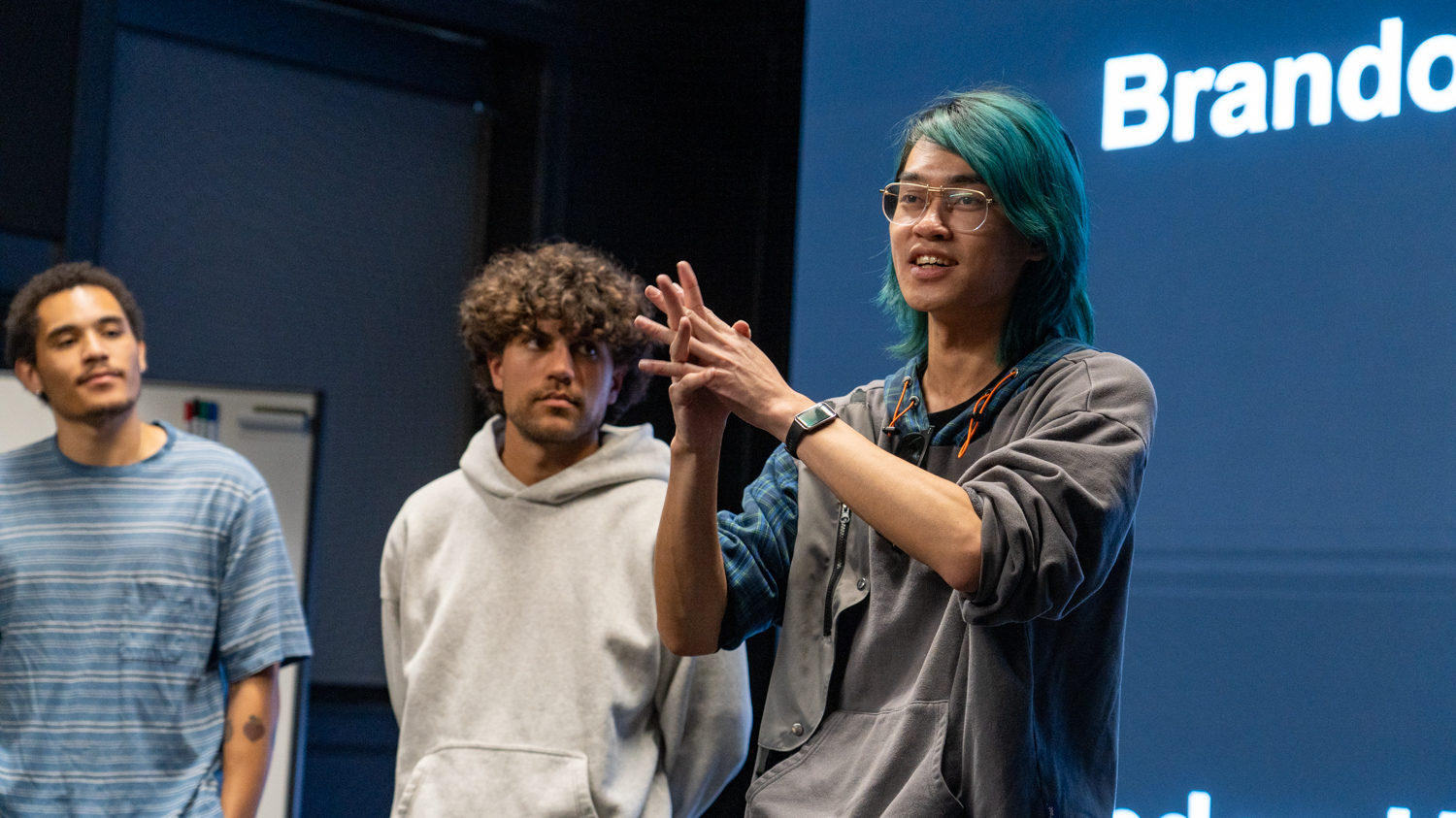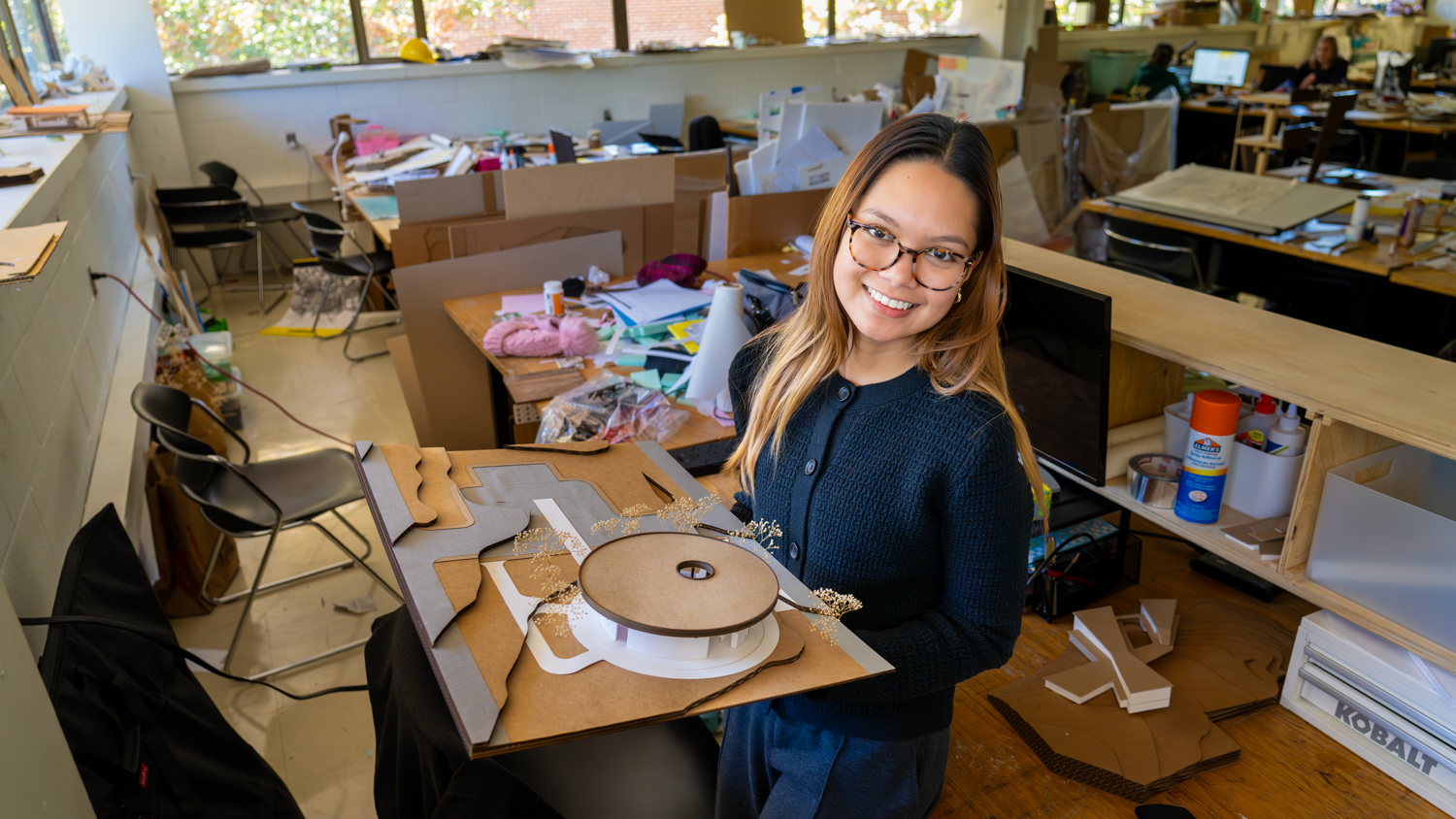NC State Graduate Student Brings Leonardo da Vinci to Life Through AI

For Leo Li, a graduate student in the Media Arts, Design and Technology (MADTech) program at NC State’s College of Design, the path from computer science to cutting-edge design was anything but predictable. Originally from Liuzhou, in China’s Guangxi Province, Leo began his undergraduate studies in computer science at NC State. But a course in visual narrative opened his eyes to a more creative future—one that blends design, storytelling, and emerging technology.
That class, CSC 486: Computational Visual Narrative, introduced Leo to the Unity game engine and inspired him to experiment with game development. “Seeing code come to life in 3D space was a moment of clarity,” Leo recalled. “It was the first time I felt my technical background could be used creatively.”
Leo transitioned to MADTech, a graduate program that merges technology with the arts, offering students flexibility and interdisciplinary collaboration. “This program gave me room to explore and connect with others from different backgrounds,” he said. Staying at NC State for graduate studies felt natural. “It feels like home,” Leo added, noting his deep connection to the campus and community.

Now, Leo is working on a project at the intersection of artificial intelligence and digital interaction. His focus: an embodied conversational agent—a lifelike, AI-driven avatar capable of engaging in natural conversation. The inspiration came from MetaHuman, a 3D character creation platform developed by Epic Games. Leo used the software to scan and create a 3D model of himself, but the real breakthrough came when he decided to build a virtual version of Leonardo da Vinci.
By feeding da Vinci’s notebooks and writings into an AI model, Leo created a digital version of the Renaissance icon—one that can answer questions, share insights, and simulate the artist’s personality. “It’s like a living Wikipedia,” Leo said. “Students could learn history not just by reading or watching, but by talking directly to a virtual Leonardo.”
But the project isn’t without its challenges. Leo acknowledges the ethical questions surrounding AI-generated humans, such as authenticity, the “uncanny valley,” and the difficulty of replicating a historical figure’s true voice. “There’s always a gap between how someone writes and how they actually speak,” he explained. “We can’t fully know da Vinci’s tone, but we can deduce his perspective from what he left behind.”
Ultimately, Leo hopes the project will help launch his career in game design or interactive technology. “I want this to be more than a school project—I want it to be a strong part of my portfolio,” he said. “If virtual humans are part of the future, I want to be on the front lines of creating them.”

As the MADTech program continues to support boundary-pushing work, Leo’s journey is a vivid example of how design and technology can converge to tell stories in entirely new ways.
This post was originally published in Office of Global Engagement.



